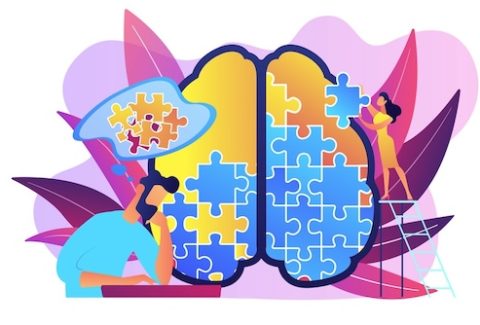12 Crucial Gestalt Skills for Therapeutic Success
Introduction:
Gestalt therapy, renowned for its emphasis on present moment awareness, holistic integration, and experiential exploration, offers a rich array of skills and techniques for facilitating personal growth and transformation.[1] Rooted in the belief that individuals possess inherent wisdom and the capacity for self-healing, Gestalt therapists guide clients on a journey of self-discovery, empowerment, and authenticity. In this article, we delve into 12 crucial skills that lie at the heart of Gestalt therapy, illuminating their significance and practical application in therapeutic practice.[2]
Presence and Mindfulness:
At the core of Gestalt therapy lies the practice of presence and mindfulness. Therapists cultivate a state of non-judgmental awareness, fully attuned to the client’s thoughts, feelings, and bodily sensations in the present moment. By remaining present and grounded, therapists create a safe and supportive container for exploration and growth, fostering trust and connection in the therapeutic relationship.[3]
Contact and Connection:
Gestalt therapists prioritize the establishment of genuine contact[4] and connection with their clients. Through empathic attunement, active listening, and authentic engagement, therapists create a relational field characterized by warmth, acceptance, and mutual respect. This sense of connection serves as the foundation for meaningful therapeutic work, allowing clients to feel seen, heard, and understood.
Holistic Exploration:
Gestalt therapy adopts a holistic approach to exploration, recognizing the interconnectedness of mind, body, and spirit.[5] Therapists encourage clients to explore their thoughts, emotions, bodily sensations, and relational dynamics in an integrated manner, fostering greater self-awareness and insight into the complexities of their experience.
Experiential Engagement:
Central to Gestalt therapy is the emphasis on experiential engagement and direct experience. Therapists guide clients in exploring their inner world through creative experiments, role-playing[6], and expressive techniques. By engaging in the here-and-now experience, clients gain fresh insight into their patterns of thinking, feeling, and behaving, paving the way for deeper self-understanding and growth.
Awareness of Gestalt Phenomena:
Gestalt therapists are attuned to the subtle nuances of Gestalt phenomena, such as unfinished business, polarities[7], and the cycle of awareness. Through gentle inquiry and exploration, therapists help clients identify and explore these phenomena, shedding light on underlying patterns and facilitating resolution and integration.
Experimentation and Creativity:
Gestalt therapy embraces a spirit of experimentation and creativity, inviting clients to explore new ways of being and relating. Therapists encourage clients to experiment with different behaviors, perspectives, and roles, fostering flexibility, spontaneity, and personal agency.
Dialogue and Exploration:
Therapeutic dialogue lies at the heart of Gestalt therapy, serving as a vehicle for exploration, discovery, and growth. Through open-ended questioning, reflective listening, and empathic inquiry, therapists facilitate a dynamic dialogue that encourages clients to delve deeper into their experience, articulate their needs, and uncover hidden truths.
Emphasis on Process:
In Gestalt therapy, the focus is not solely on content but also on process. Therapists pay attention to the unfolding dynamics of the therapeutic encounter, tracking shifts in energy, tension, and emotion. By staying attuned to the process, therapists help clients gain insight into their relational patterns, defenses, and ways of being in the world.[8]
Use of Gestalt Language:
Gestalt therapists employ a unique language characterized by vivid imagery, metaphor, and symbolism. Through the use of evocative language, therapists invite clients to access deeper layers of experience, bypassing cognitive defenses and tapping into the wisdom of the unconscious mind.[9]
Encouragement of Personal Responsibility:
Gestalt therapy emphasizes personal responsibility and agency, empowering clients to take ownership of their thoughts, feelings, and actions. Therapists support clients in recognizing their power to make choices, set boundaries, and create meaningful change in their lives.[10]
Integration of Gestalt Principles:
Throughout the therapeutic process, Gestalt therapists integrate core principles such as awareness, contact, and responsibility. By embodying these principles in their interactions with clients, therapists model authenticity, presence, and congruence, creating a therapeutic environment conducive to growth and transformation.[11]
Commitment to Growth and Change:
Above all, Gestalt therapy is guided by a commitment to growth and change.[12] Therapists hold a deep belief in the inherent capacity of individuals to heal, grow, and evolve. Through compassionate support, skillful guidance, and a spirit of collaboration, therapists partner with clients on their journey towards greater authenticity, fulfillment, and wholeness.
Conclusion:
As we journey through the landscape of Gestalt therapy, we encounter a rich tapestry of skills and techniques designed to facilitate healing, growth, and transformation. From the cultivation of presence and mindfulness to the encouragement of personal responsibility and agency, Gestalt therapy offers a holistic framework for addressing the complexities of human experience. By mastering these 12 crucial skills, therapists empower clients to embark on a journey of self-discovery, empowerment, and authentic living. In the dynamic interplay of therapist and client, Gestalt therapy emerges as a powerful catalyst for personal growth, offering a pathway towards greater awareness, authenticity, and fulfillment.
Interested in exploring Gestalt Therapy further? Find out if our upcoming Gestalt Therapy Virtual Conference, scheduled for May 10, 2024 from 9-1pm (EDT), is the perfect match for you. Click here to discover more.
[1] Raffagnino, Rosalba. “Gestalt therapy effectiveness: A systematic review of empirical evidence.” Open Journal of Social Sciences 7 (2019): 66-83.
[2] Melnick, Joseph. Mending the world: Social healing interventions by Gestalt practitioners worldwide. Gestalt Press, 2016.
[3] Nunes, Andrea Loss, and Mariane Lima de Souza. “MINDFULNESS AND GESTALT-THERAPY MEDITATION: A POSSIBLE ENCOUNTER FOR HUMAN HEALTH.”
[4] Ginger, Serge. Gestalt therapy: the art of contact. Routledge, 2018.
[5] Hamilton, Jeffrey D. Gestalt in pastoral care and counseling: A holistic approach. Routledge, 2014.
[6] Rizal, Syamsul, et al. “Gestalt Counseling in Overcoming Unfinished Business.” International Conference on the Teaching English and Literature. Vol. 1. No. 1. 2020.
[7] Höll, Kathleen. “Polarity Principle, Creative Indifference, and the Revolution of Egoism: Salomo Friedlaender’s Impact on the Theory of Gestalt Therapy.” Gestalt Review 24.2 (2020): 178-199.
[8] Brownell, Philip. “Contemporary Gestalt therapy.” (2016).
[9] Beja, Vincent. “A pragmatic perspective on the Gestalt therapy experience.” Gestalt Review 18.1 (2014): 54-64.
[10] Abbasi, Somayye. “Effectiveness of Gestalt therapy on differentiation of self and ego strength of men with generalized anxiety disorder.” International Journal of Psychology (IPA) 15.2 (2021): 131-152.
[11] Brownell, Phillip. “Assimilating/integrative: The case of contemporary gestalt therapy.” Abnormal psychology across the ages 1 (2013): 221-234.
[12] Obidi, Zadegan Afsaneh, Seyed Asghar Mousavi, and Mohammad Narimani. “The Effectiveness of Gestalt Therapy on Emotional Disorders and Post-Traumatic Growth in Girls with Post-Traumatic Stress Disorder.” (2023): 411-423.









